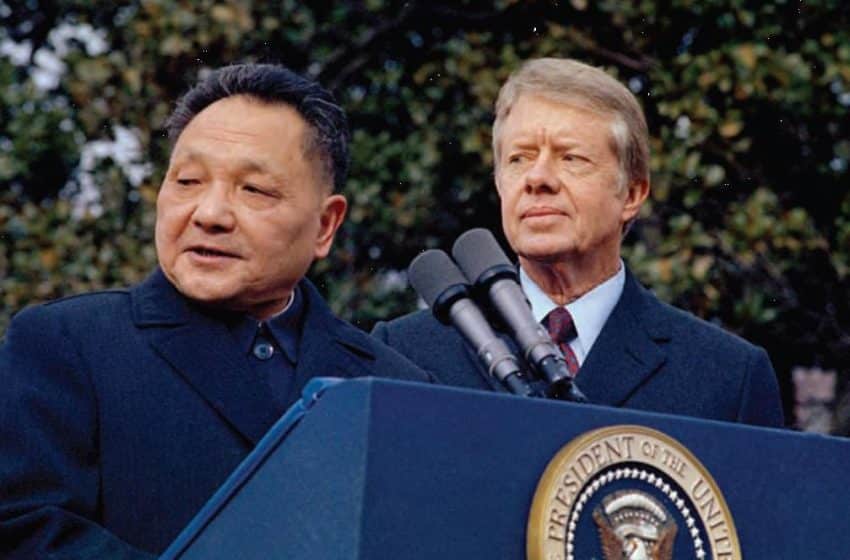Debunking 10 Myths about China and the South China Sea
Throughout its history, the South China Sea has remained a “sea of peace” untouched by a large-scale battle. The South China Sea arbitration, however, is turning this region into a powder keg. All too often, the public discourse on the relations between China and the South China Sea has only made an already complex subject more complicated. There is an urgent need to clarify at least 10 myths.
Myth No 1: China’s stance against the South China Sea arbitration violates international law. By initiating the arbitration case, the Philippines was the one that broke its own commitment made in the Declaration on the Conduct of Parties in the South China Sea, signed between China and members of the Association of Southeast Asian Nations, which states that disputes should be resolved by those countries directly involved, through friendly consultations and negotiations.
Based on the declaration, China’s stance on the arbitration has been firm and clear, which can be summarised as “non-acceptance, non-participation, non-recognition, and non-execution”.
The nature of the dispute involves two separate issues: one is the sovereignty claim over Nansha Islands, and the other is maritime rights. Not only are territorial issues beyond the scope of the UN Convention on the Law of the Sea, China had also lodged a declaration with the UN in 2006 – in accordance with Article 298 of the Law of the Sea – that it does not accept any of the compulsory dispute settlement procedures with regard to disputes on maritime delimitation. Thus, neither can the Philippines initiate a compulsory arbitration under this convention, nor does the Permanent Court of Arbitration at The Hague have the jurisdiction to adjudicate on the case.
The Philippine conduct violates the fourth article of the Declaration on the Conduct of Parties, abuses the Law of the Sea arbitration procedures, and infringes China’s right to choose the means of dispute settlement, and is thus illegal.

Myth No 2: The “nine-dash line” does not comply with the Law of the Sea. The accusation does not hold water at all. To begin with, the nine-dash line predated the Law of the Sea. In 1948, for example, the Chinese government published the dotted line to reaffirm China’s sovereignty and relevant rights in the South China Sea. In addition, the convention does not exclude historical rights; its repeated references to “historical bays” and “historical titles” speak volumes about its respect for historical rights.
Furthermore, the preamble of the Law of the Sea mentions the desirability to “establish through this Convention, with due regard for the sovereignty of all states, a legal order for the seas and oceans”. This makes clear that the issue of territorial sovereignty is not subject to the Law of the Sea. Therefore, it cannot be used as a basis to judge China’s nine-dash line.
Myth No 3: China claims sovereignty over the whole South China Sea. Incorrect media reports, to some extent, have led to this misunderstanding. The fact is, there is no country, including China, claiming sovereignty over the whole South China Sea. The core of the South China Sea issue relates to the disputes over sovereignty and maritime administration of parts of Nansha Islands between China and other claimant countries. China’s position is clear and consistent: it has indisputable sovereignty over the South China Sea islands, and their adjacent waters, but not the whole South China Sea.
Meanwhile, China seeks to maintain peace and stability in the South China Sea and calls for adherence to the principle of “putting aside disputes and seeking joint development” in the region.
China is also ready to offer other countries joint use of its facilities in the South China Sea for humanitarian rescue and disaster. In the same spirit, countries should act in accordance with international law when exercising freedom of navigation and overflight, and respect the sovereignty, security and relevant rights and interests of coastal states.
Myth No 5: China intends to change the “status quo” in the South China Sea. What exactly is this “status quo”? Before 2013, the term rarely featured in diplomatic discussions on South China Sea disputes. Then came the US strategy of rebalancing to the Asia-Pacific, and claimants in the disputed seas began to embrace the idea of defending the “status quo”. It should be clear that China does not recognise the so-called status quo of the Philippines and other countries that are occupying China’s islands and reefs through illegal means.
Myth No 6: China is building “artificial islands” in the South China Sea. The construction activities on China’s islands and reefs are conducted on natural features over which China has sovereignty and which form part of the Nansha Islands. They are fundamentally different from the “artificial islands, installations and structures” defined in the Law of the Sea.
Myth No 7: China’s relevant islands and reefs are low-tide elevations with no territorial status. In accordance with international law, China’s sovereignty over the Nansha Islands covers not only the islands itself, but also the islands, reefs, cays and sands that form the Nansha Islands and related waters. In 1935, 1947 and 1983, the Chinese government published the names of the South China Sea islands, including the collective and individual names of the Nansha Islands, including its components and various natural features. China’s sovereignty over the Nansha Islands and its components has a full historical and legal basis.
Some countries have tried to separate the Nansha Islands from its components, willfully claiming that the related natural features have no territorial status. This is nothing but an out-of-context interpretation of international law.
Myth No 8: China is accelerating the militarisation of the South China Sea. Since the US rebalance to the Asia-Pacific, the US has deepened its intervention in the South China Sea disputes. To accuse China of militarising the South China Sea is groundless. On the contrary, the South China Sea is being militarised by high-profile displays of military strength and frequent and large-scale military drills by certain countries and their allies. China is committed to a path of peaceful development. This stance is consistent and clear-cut. The constructions in the South China Sea are mainly for civilian purposes, and with the acknowledged goal of better safeguarding China’s territorial sovereignty and maritime rights and interests.
Myth No 9: China’s construction activities damage the coral reefs and marine ecology. As the owner of the Nansha Islands, China cares more than any other country about the ecological preservation of the islands, reefs and the surrounding waters. Its construction activities place equal importance on environmental preservation.
Myth No 10: China is becoming assertive in the South China Sea. This seems to be the consensus in the media, academic journals and other professional venues. In fact, China’s actions in the South China Sea are necessary to protect its legitimate interests, and are justified reactions to provocations by other claimant states. The tensions in the region can be attributed to collusion between the US and regional claimant states. It is popularly believed that, without Washington’s backing and high-profile policy of “returning to Asia”, regional states would not be so eager to challenge China’s interests in the South China Sea.
China will continue to safeguard peace and stability in the South China Sea and promote the development of neighbouring countries. Regardless of the result of the arbitration, China will continue to work closely with Asean countries to safeguard peace and stability, and uphold freedom of navigation in the South China Sea, so as to eventually turn it into a “sea of peace, friendship and cooperation”.
Wang Wen is the executive dean of the Chongyang Institute for Financial Studies at Renmin University of China. His latest best-seller book is Anxieties of USA. This is an edited translation of a speech he gave at the recent US-China dialogue on the South China Sea.
By WANG WEN in South China Morning Post











